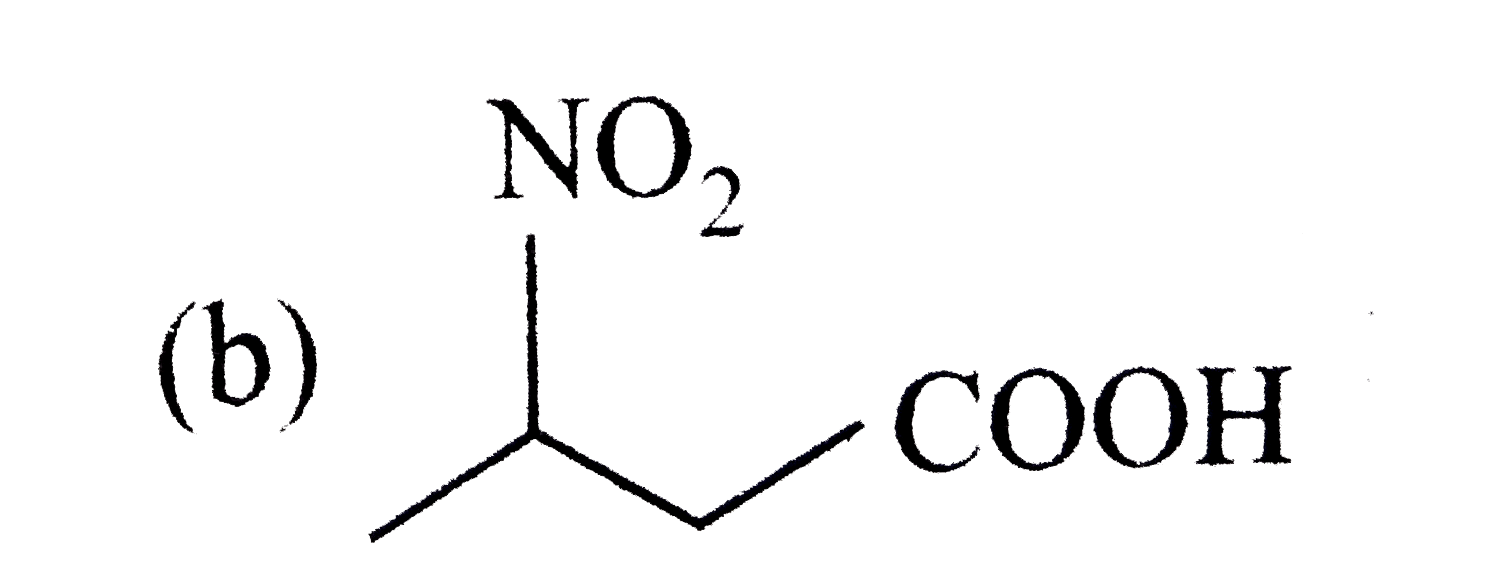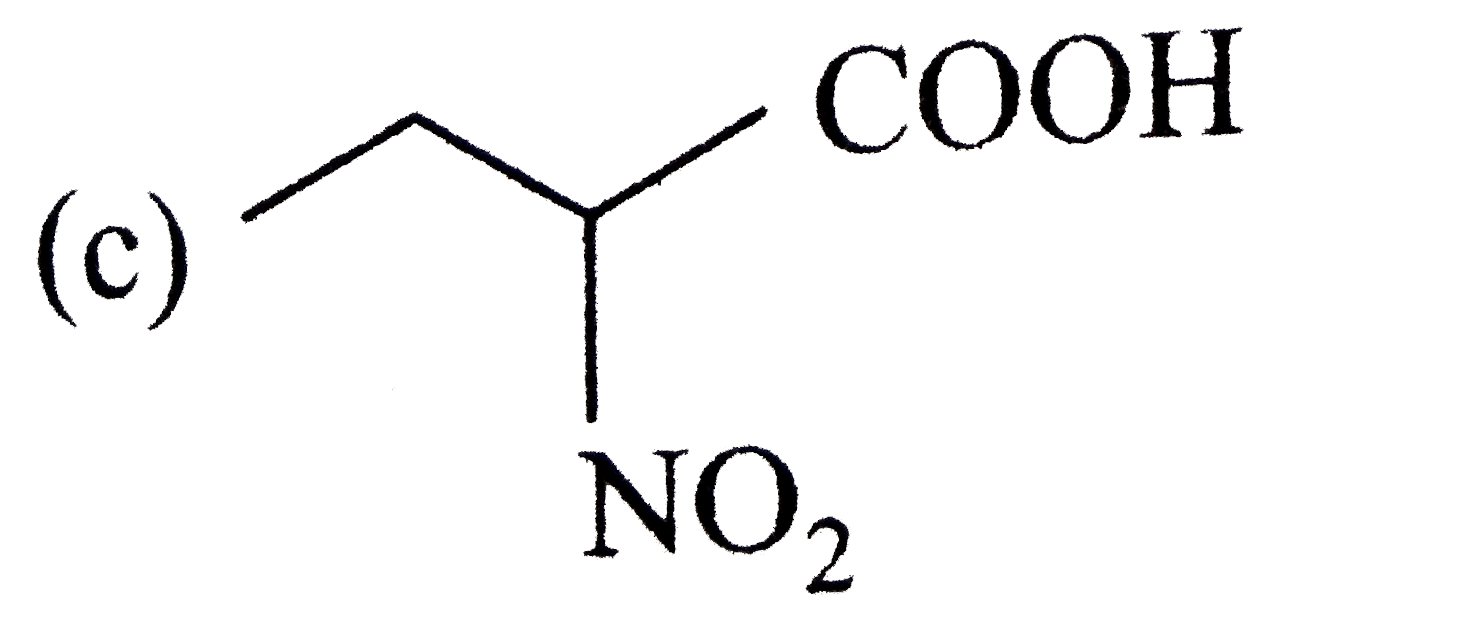Which of the following carboxylic acid can undergo deccarboxylation on simple heating even in the absence of soda lime ?




The correct Answer is:c
To determine which carboxylic acid can undergo decarboxylation on simple heating without the need for soda lime, we will analyze each option provided in the question.
1. Understanding Decarboxylation:
Decarboxylation is a chemical reaction that involves the removal of a carboxyl group (-COOH) from a carboxylic acid, resulting in the formation of an alkane. This reaction can be facilitated by soda lime (a mixture of sodium hydroxide and calcium oxide), but some compounds can undergo decarboxylation even without it.
2. Analyzing the Options:
- Option A: This carboxylic acid requires soda lime for decarboxylation. Without it, simple heating will not lead to the removal of the -COOH group. Therefore, this option is not correct.
- Option B: Similar to Option A, this compound also requires soda lime for decarboxylation. Simple heating will not suffice to remove the -COOH group. Thus, this option is also not correct.
- Option C: This carboxylic acid has a structure that allows for resonance stabilization. The presence of a nitro group (NO2) adjacent to the carboxyl group can facilitate the removal of the -COOH group through resonance effects. This means that upon simple heating, the -COOH group can be removed without the need for soda lime. Therefore, this option is a strong candidate for decarboxylation.
- Option D: Similar to Options A and B, this carboxylic acid also requires soda lime for decarboxylation. Simple heating will not lead to the removal of the -COOH group. Hence, this option is not correct.
3. Conclusion:
After analyzing all the options, we conclude that Option C is the only carboxylic acid that can undergo decarboxylation on simple heating even in the absence of soda lime due to the resonance stabilization provided by the adjacent nitro group.
Final Answer:
Option C is the correct answer.
---
Decarboxylation is a chemical reaction that involves the removal of a carboxyl group (-COOH) from a carboxylic acid, resulting in the formation of an alkane. This reaction can be facilitated by soda lime (a mixture of sodium hydroxide and calcium oxide), but some compounds can undergo decarboxylation even without it.
- Option A: This carboxylic acid requires soda lime for decarboxylation. Without it, simple heating will not lead to the removal of the -COOH group. Therefore, this option is not correct.
- Option B: Similar to Option A, this compound also requires soda lime for decarboxylation. Simple heating will not suffice to remove the -COOH group. Thus, this option is also not correct.
- Option C: This carboxylic acid has a structure that allows for resonance stabilization. The presence of a nitro group (NO2) adjacent to the carboxyl group can facilitate the removal of the -COOH group through resonance effects. This means that upon simple heating, the -COOH group can be removed without the need for soda lime. Therefore, this option is a strong candidate for decarboxylation.
- Option D: Similar to Options A and B, this carboxylic acid also requires soda lime for decarboxylation. Simple heating will not lead to the removal of the -COOH group. Hence, this option is not correct.
After analyzing all the options, we conclude that Option C is the only carboxylic acid that can undergo decarboxylation on simple heating even in the absence of soda lime due to the resonance stabilization provided by the adjacent nitro group.
Option C is the correct answer.
Topper's Solved these Questions
- HYDROCARBONSBOOK - A2ZCHAPTER - HYDROCARBONSEXERCISE - Chemical Properties Of Alkanes
97 Videos
- HYDROCARBONSBOOK - A2ZCHAPTER - HYDROCARBONSEXERCISE - Methods Of Preparation Of Alkanes
31 Videos
- ENVIRONMENTAL CHEMISTRYBOOK - A2ZCHAPTER - ENVIRONMENTAL CHEMISTRYEXERCISE - Section D - Chapter End Test
30 Videos
- HYDROGENBOOK - A2ZCHAPTER - HYDROGENEXERCISE - Section D - Chapter End Test
30 Videos
Similar Questions
Knowledge Check
Which of the following carboxylic acids undergoes decarboxylation easily
AC6H5COCOOHBC6H5COCH2COOHCC6H5CHOHCOOHDC6H5CH2COOHWhich of the following carboxylic acids undergoes decarboxylation easily
AC6H5−CO−CH2−COOHBC6H5−CO−COOHCC6H5−C∣OHH−COOHDC6H5−C∣NH2H−COOHWhich of the following carboxylic acids undergoes decarboxylation easily ?
AC6H5COCH2COOHBC6H5COCOOHC D
D
Which of the following carboxylic acids do not undergo decarboxylation simply on heating?
View SolutionWhich of the following carboxylic acids undergoes decarboxylation easily ?
View SolutionWhich of the following carboxylic acids undergoes decarboxylation on heating ?
View SolutionWhich of the following carboxylic acids undergoes decarboxylation most easily ?
View SolutionWhich of the following Carboxylic acids donot undergo decarboxylation on heating?
View Solution
